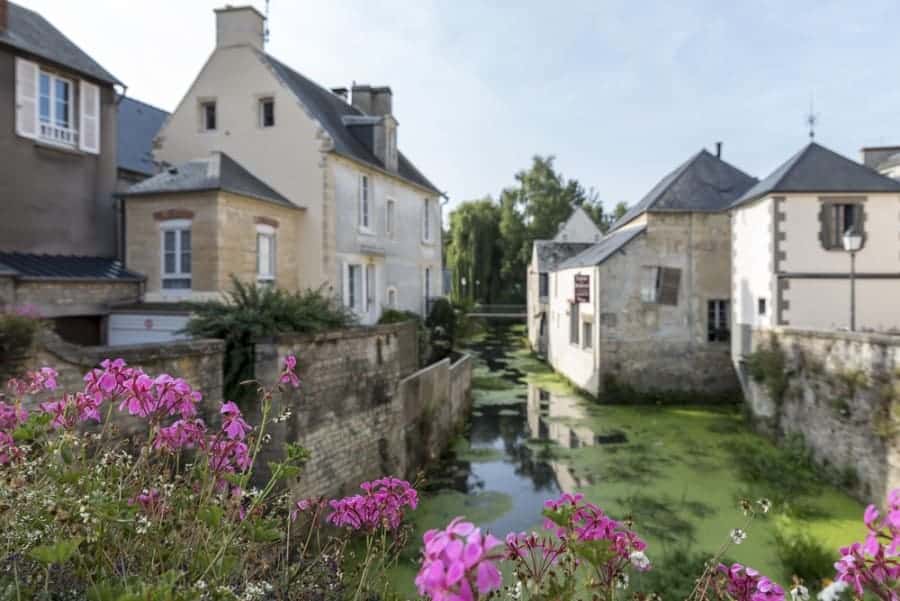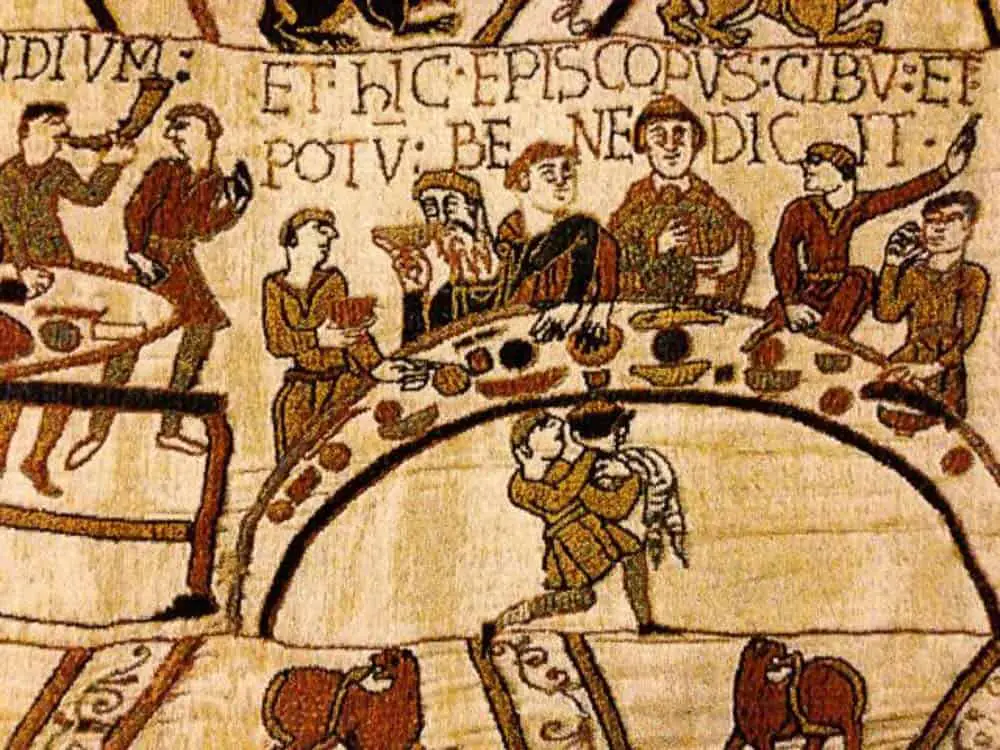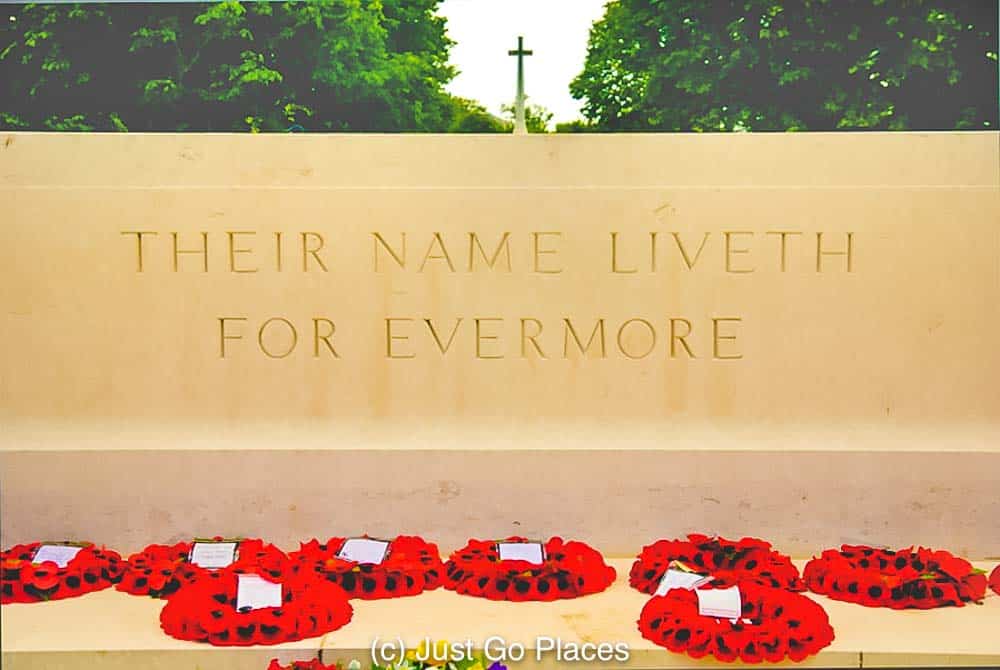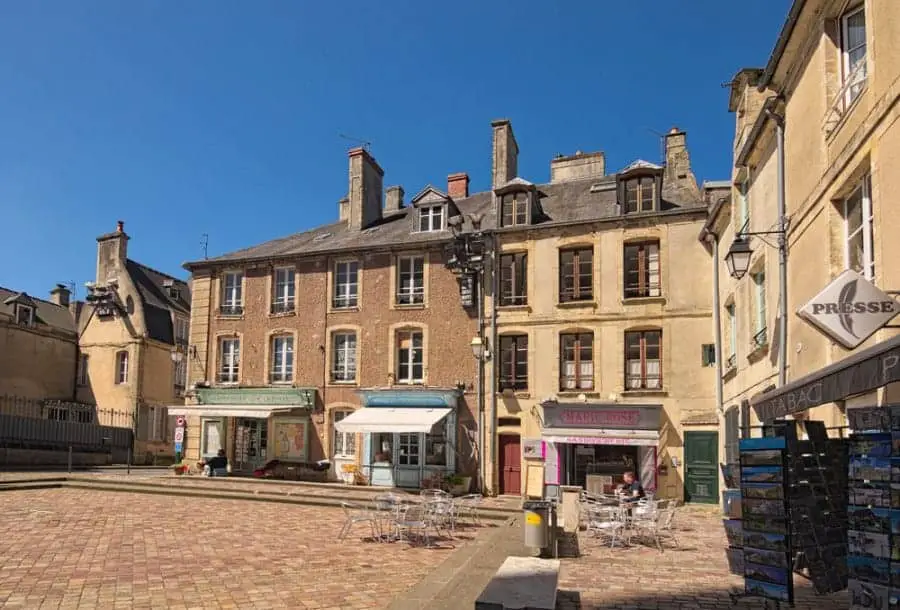How did Bayeux France find itself at the heart of two invasions that shaped world history that took place nearly 1000 years apart? An accident of geography locates Bayeux just a few miles from the Northern coast of France. Bayeux France is famous for the Bayeux Tapestries (a UNESCO world heritage listing) commemorating the Norman invasion of England by William the Conqueror in 1066. Conversely, Bayeux is also the first city liberated in France from the Nazis in 1944 during World War II. Among the cool things to do in Bayeux France are visiting the 900+ year old Bayeux Cathedral, the Bayeux Tapestry Museum and the Bayeux war cemetery.
Contents
What Makes Bayeux France Special?
The ancient city of Bayeux Normandy is nearly 2000 years old. Along this epic timeline you had the Gauls, the Romans, the Saxons, the Vikings, the Normans, the English, the French, the Germans, the Allied Forces and the French again.
The town of Bayeux is very pretty with cobblestone streets, half-timbered houses and mellowed stone buildings. Its buildings survived the carnage inflicted on other towns during World War II because it was the first big town to be liberated by the Allied Forces on the morning of the 7th June 1944 – the day after D-Day. With the arrival of General de Gaulle’s French forces on June 14, Bayeux was briefly the capital of Free France until the liberation of Paris!
Bayeux is famous for the Bayeux Tapestries which depicts the Norman conquest of England. Having escaped relatively unscathed from World War II, the town is full of medieval buildings. The River Aure flows through the centre of Bayeux and adds to its charm.
5 Cool Things to Do in Bayeux France
There are plenty of things to do in Bayeux France apart from soaking in its small city charm especially if you are a history buff.
Bayeux Tapestry Museum
The Bayeux Tapestries shows the events leading up to the conquest of England by William the Conqueror and his Norman forces in 1066.
The Bayeux tapestry facts
The Bayeux tapestry scenes are great propaganda starting well before the Norman invasion and depict William as a fine upstanding friend of Harold.
King Harold reneges on his promise made at Bayeux that William would be his successor. What is a Norman-mere-generations-removed-from-his-Viking-ancestors to do? Invade, of course. King Harold had it coming.
Although the Bayeux Tapestry was supposedly woven by William the Conqueror’s wife, Matilda and her ladies-in-waiting at the end of 11th century, in all likelihood the needlework was done by monks in England. William the Conqueror’s half-brother, Bishop Odo, commissioned it for the Bayeux Cathedral.
The Bayeux Tapestry in France was almost destroyed during the French Revolution when it was used as a wagon cover!
The Bayeux tapestry length is remarkable – 70 meters long and 50 centimetres high with 58 separate scenes.
William’s invasion of England was the last time anyone was able to successfully invade the country. Fascinated with the Bayeux Tapestry in France, the Nazis were on a mission to proved that it was people of Germanic ancestry who invaded (not the Normans) as part of their goal for European domination.
Bayeux Tapestry Location
The Bayeux tapestry location has changed over the years. The Bayeux Tapestries would originally have been displayed in the nave of the Bayeux cathedral but now is in a museum in the centre of town.
Bayeux Tapestry Scenes
I thought the Bayeux tapestry scenes were amazing, propaganda or not. The amount of detail on the Bayeux tapestries is astounding. It’s easy to tell that war in any century was a gruesome event. The colours, moreover, are still vibrant, especially for embroidery that is over 900 years old.
You are given an audio guide which explains the Bayeux tapestry scenes very well. You are rushed through the visit, however, because the commentary is fairly speedy and there is no pause button on the audio guide.
Moreover, you are on a walkway in the Bayeux Tapestry Museum similar to what is done for the crown jewels at the Tower of London. Presumably, the Bayeux Tapestry Museum needs to keep people moving in periods of heavy visitor numbers.
Bayeux Cathedral
The Bayeux Cathedral, Notre Dame de Bayeux, is a large gothic structure in the center of the old town.
Dedicated to local hero, William the Conqueror, who was present at its consecration in 1077, Bayeux Cathedral has elements dating back to the 11th century. There are guided tours of Bayeux Cathedral available during the summer.

Bayeux Cathedral was the first Bayeux Tapestry location but now it resides in temperature-controlled comfort at the Bayeux Tapestry museum in the city center.
The Bayeux cathedral was meant as a place of worship for religious people, such as the priests and monks. As such, the cathedral has very few stained glass windows. Presumably Sainte Chapelle in Paris is full of stained glass because the king liked it even though he knew his catechism.
This giant bell, named Therese-Benedict, is a recent addition to the Bayeux Cathedral . Installed for the 70th anniversary of the Battle of Normandy, this bell has special significance because it has been 156 years since a bell has been replaced.

This bell, named Therese-Benedict, was installed at the Bayeux Cathedral to commemorate the 70th anniversary of D-Day.
Therese-Benedict rang for the first time at the Bayeux Cathedral on the 14th of June 2013 during the height of the 70th anniversary celebrations.
Bayeux War Cemetery Bayeux
The Bayeux War Cemetery is a British cemetery holding the remains of 4000+ soldiers (both British and other nationalities) who died during the Battle of Normandy.
The Bayeux war cemetery is the largest British Commonwealth cemetery from World War II in Europe.
Why did the Bayeux cemetery get designated for the British war dead? The nearest D-Day landing spot would have been Gold Beach which was the assigned landing spot for the British forces (along with some other Allied forces such as the Polish and and the Dutch).
Although there was little fighting in Bayeux itself, the Bayeux British cemetery is the resting place of many who died in the region. Located just outside of the town, the Bayeux cemetery has had a major facelift with brand new tombstones and landscaped grounds. The Bayeux War Cemetery is a fitting tribute to the brave men who sacrificed their lives for the greater good.
Battle of Normandy Museum Bayeux
The Memorial Museum of the Battle of Normandy commemorates the events from the Battle of Normandy – an event that spanned 3 months from June until August 1944.
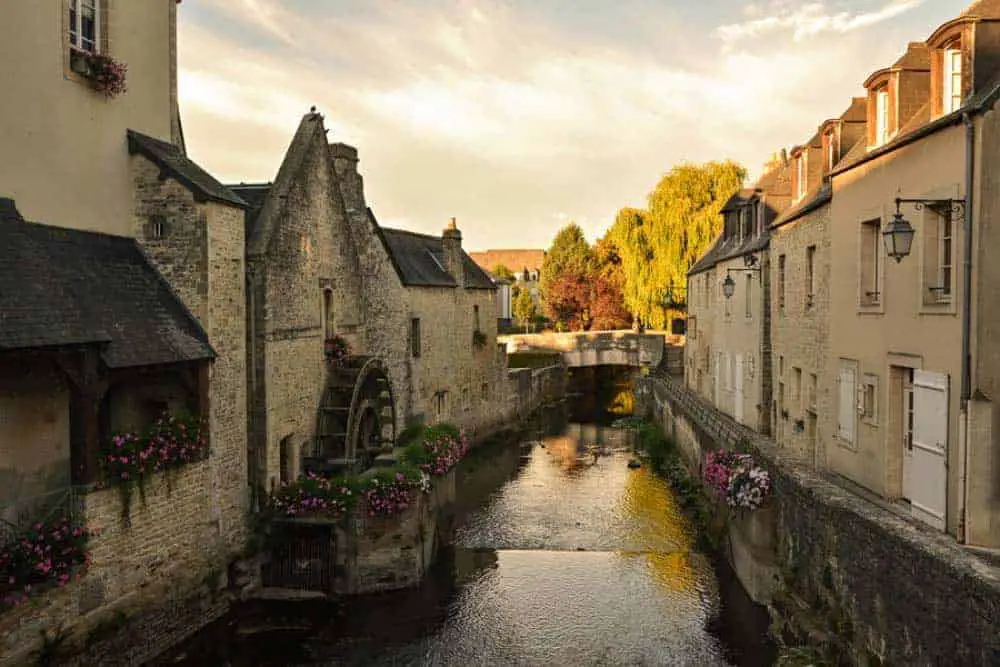
It’s only 14 miles from Bayeux to Omaha Beach which made it the first city liberated by the Allied Troops after the D-Day invasion.
You can’t miss the Bayeux museum of the battle of Normandy – just look for the tanks sitting in front!
The Old Town of Bayeux
Despite being in the thick of the action for hundreds of years, Bayeux France is remarkably well preserved with many charming buildings dating from the 16th through the 19th centuries. We’re talking half-timbered houses, cobblestone streets, water mills, canals and a street market which combine to create a picture perfect little town that is compact and easy to walk.
The city itself was not destroyed because of the foresight of the British during World War 2 who built a by-pass road that skirted the city and was used for transporting soldiers and weapons. Nearby cities like Caen were not so fortunate and were heavily bombed which result in much less historic charm.
Getting to Bayeux Normandy
Bayeux is not overly touristy. It only gets about 1 million visitors a year. Getting from Paris to Bayeux by train is relatively straight forward.
The Paris to Bayeux train connection has around 7 direct trains a day during the week (less on the weekends). You take the Paris to Bayeux train from Paris St Lazare station. The journey by direct train takes a little over 2 hours.
The Bayeux train station is located a short walk from town and there are also taxis available at the station.
You can easily combine a trip to Bayeux with visits to the D-Day landing beaches. It is only 14 miles from Bayeux to Omaha Beach if you would like to visit and are staying in Bayeux. You can get from Bayeux to Omaha Beach by bus (about an hour on Line 70) or taxi (about 20 minutes).
SPREAD THE WORD! PIN THIS TO YOUR TRAVEL PINTEREST BOARDS FOR FUTURE REFERENCE!

Bayeux France has been part of 2 epic invasions a thousand years apart (the Norman Conquest and the D-Day Landings)

Ever heard of Bayeux, France? Bayeux is famous for the UNESCO-recognized
Bayeux tapestry, but its history is also something to discover. Read this post and find
out the very interesting history of this town + a list of things to do in Bayeux, France,
which include visiting the 900+ year old Bayeux Cathedral, the Bayeux Tapestry
Museum and the Bayeux war cemetery. #bayeux #france #tapestry #unesco
This site generates income via partnerships with carefully-curated travel and lifestyle brands and/or purchases made through links to them at no extra cost to you. More information may be found on our Disclosure Policy.

